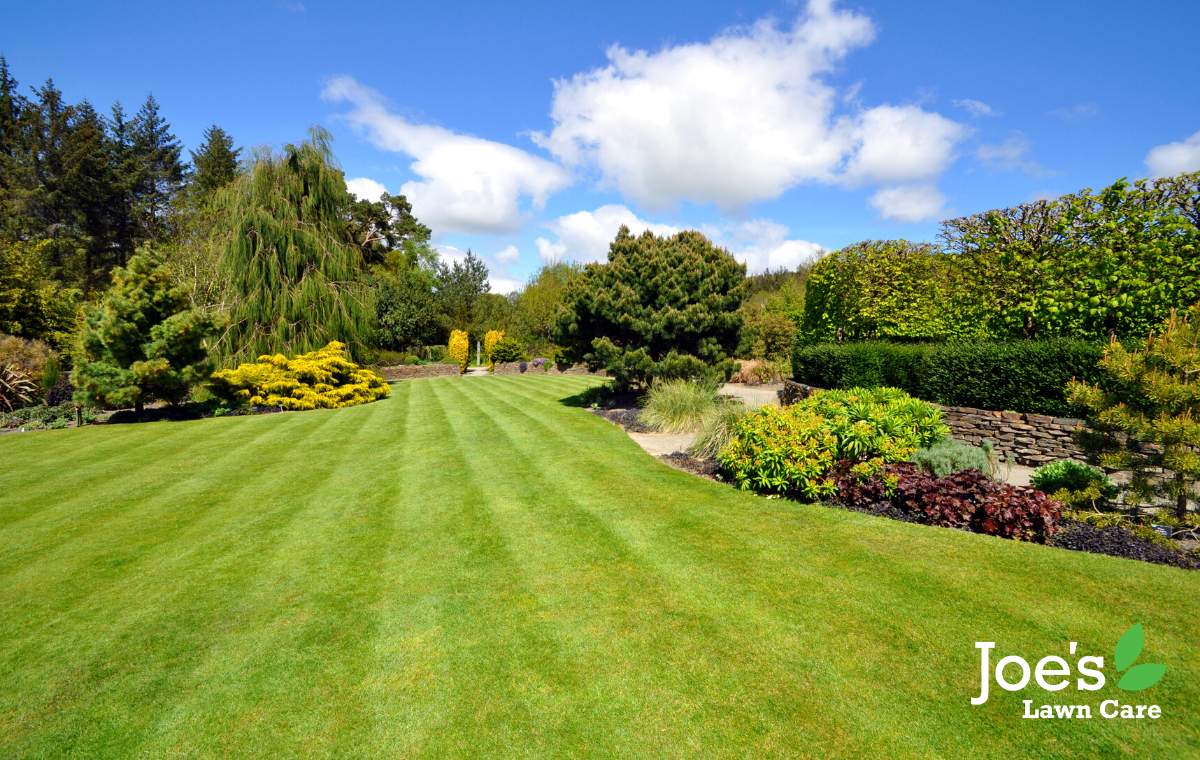7 Biggest Lawn Care Mistakes (And How to Avoid Them)
There are many lawn care mistakes which we all make, but here are the top 7. Here’s something you probably don’t hear enough: life should be fun. It should be spent eating ice creams by the sea, racing RC cars around empty car parks and growing yourself the lushest lawn in your county. Because, trust me, nothing beats growing a lush, green lawn. They make: BBQs better, your Instagram stories snazzier, mental health issues easier to manage, picnics more perfect and staring out of the kitchen window with a fresh brew even more dreamy than they look in the movies.
And here’s the best bit: growing a super-lovely lawn is totally within the capabilities of every garden homeowner. Sure, some lawns will fail, but never because of neglect. It’s almost-always because of a few bad practices and accidentally making a few pretty common mistakes. The trick is to follow a few simple rules.
So, to help you grow the greenest, healthiest lawn since Dr Seuss started writing books, we’ve pulled together a list of the biggest pitfalls standing between you and the lawn of your dreams. Now go get ‘em, tiger!

Mistake No.1: Mowing Your Lawn Too Darn Short
Rule #1 of lawn care is never cut your lawn shorter than 3 inches long. Rule #2 of lawn care is never cut your lawn shorter than 3 inches long. To correctly cut your grass, your lawn needs to feel like a posh shag pile rug or else you’ll be doing serious harm to it. Such as putting unnecessary stress on your grass, sapping it of its regenerative powers and making it more susceptible to insects and disease.
That’s why you need to pick up a pen, grab the magnetic notepad off your fridge and write a reminder to yourself that says, “adjust cutting height of lawn mower,” and follow that up with a quick message about how you shouldn’t trim your grass by more than a third at any one time. Do this and you’ll notice a nice thick lawn that’s able to crowd out weeds. Winning.
Mistake No. 2: Cutting Your Lawn With Dull Blades
Sharp blades cut through grass like a hot knife through butter. Dull blades, however, they rip and tear your grass until you’re left with jagged ends that a) turn brown quickly and b) make your lawn way more susceptible to diseases.
Thankfully, the solution to this is easy: sharpen your blades, something that only needs to be done twice a year. Once at the start of spring and once again halfway through the mowing season, say, mid-August. That said, if you feel you’ve hit a few more rocks than you’d planned, it could be worth sharpening your blades a couple more times.
Mistake No.3: The Soil Wasn’t Tested
To grow good, strong, healthy n’ happy grass, you need some pretty sound soil for it to sprout from. Translation: the pH level needs to be just right. Not too acidic, not too alkaline. But don’t worry if GCSE science isn’t your strongest subject because there are 4 super-easy ways to test your own soil. Once you’ve found out the problem (if there is one), it’s usually a pretty easy fix. Just a matter of sprinkling a little bit of lime or some sulphur.
Just be aware that soil conditions can change, so it’s important to repeat the test every spring.
Mistake No.4: Collecting Up Your Grass Clippings
Whether you’ve heard that you should collect your clippings or you just don’t like the idea of leaving them unbagged, your grass loves them. Like really loves them. That’s because these grass clippings will quickly decompose to give your lawn so many goodies, from moisture to shade to yummy nutrients.
That said, if you notice these loose clippings start to form a mob and clump together, grab your rake and deal with them otherwise they’ll start doing more harm than good, turning into a thick mat that will start water, sun and nutrients from getting to the roots.
Mistake No.5: Not Dealing With Your Thatch
Thatch is basically a thick layer of pointless, dead, organic lawn matter, made up of things like, oh you know, fallen leaves and old grass clippings that now hangout on the top of the soil. Now most of the time, this layer of thatch is fine. But when it gets thicker than ½ an inch, well, that’s when it can starve your lawn and stop it from enjoying all that sunlight and rain and nutrients. That’s where dethatching comes in.
If you’ve got a small lawn and strong back, this can be done with a sturdy rake and some elbow grease. If, however, you’ve got a bigger lawn (or you just don’t fancy taking the hard road), we recommend you call in the experts and have them do a scarification job, which involves a machine, some spinning tines and, at the end of the day, a lawn that’s ready to live its best life.
Mistake No.6: Not Aerating Your Lawn
There are a few core lawn care practices we absolutely swear by and aeration is one of them. Yet barely any homeowners have ever aerated lawns. What this process involves is making a bunch of holes in your lawn’s soil. This so that water, fertiliser and nutrients can get down deep to where your roots are.
Now you can do this with a pitchfork if you fancy, or buy some attachments for your wellies. Then all you got to do is start walking up and down while listening to a podcast. But the way we do it is using a technique called core aeration, which removes plugs from your lawn. This will really help your grass become the healthiest it’s ever been.
Mistake No.7: Not Raking Up Those Pesky Leaves
I know, I know — no one likes having to traipse across their garden, hunting down their rake. To then start raking the endless amount of leaves into piles (before moving them into your compost bin). But, trust me, it’s better than the alternative, which is total apocalypse. Sort of. If the apocalypse involves said leaves sticking together to form an impenetrable blanket that has the ability to kill your grass and breed fungal diseases. So, yeah, rake up your leaves.
Thanks for reading our blog on the ‘7 Biggest Lawn Care Mistakes (And How to Avoid Them)’! For more lawn care tips and tricks, follow us on Facebook and Instagram.





